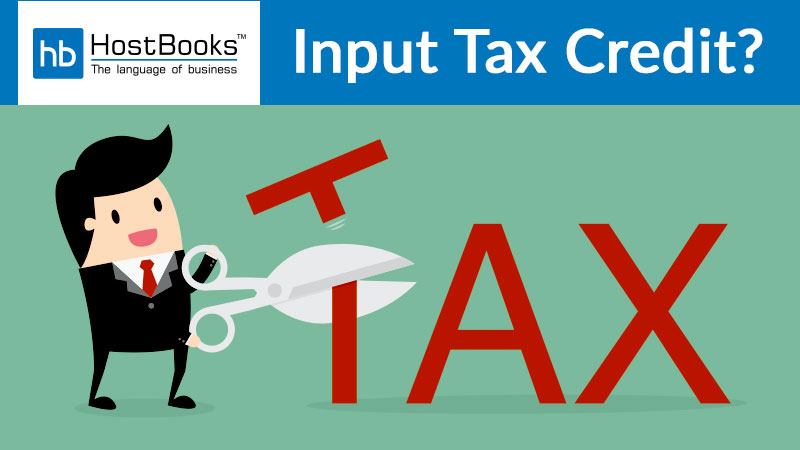What is Input Tax Credit (ITC)?

The Goods and Services Tax (GST) subsumed all the types of indirect taxes like VAT, Service Tax, Excise Duty, etc. that existed in the pre-GST regime. And, it has also eliminated the biggest drawback of the pre-GST regime i.e. the cascading effect. Earlier the taxpayers paid taxes on tax which rendered the taxation system ineffective. However, under GST, the taxpayers can claim the Input Tax Credit.
What does Input Tax Credit mean?
ITC is the credit that a taxpayer can claim if he has already paid taxes on the input. Let’s take an example. A manufacturer pays Rs. 100 as tax when he purchases the inputs. And, he pays Rs. 200 as tax on the output. Hence, in this case the manufacturer needs to pay only the difference between both the amounts i.e. Rs. 100. This is known as the Input Tax Credit.
Who are eligible to claim Input Tax Credit?
- The buyer who possesses a valid tax invoice or other prescribed document issued by a registered dealer.
- The buyer who receives goods or services. If the same is received in installments, then the credit can be claimed for the last invoice.
- The buyer who pays the supplier for the supplies received within a period of 180 days from the date when the invoice is issued. And, if he fails to do so, the amount will then be added to his output tax liability.
- The supplier who has paid the tax to the Government that was due on the buyer’s purchases.
- The supplier who is GST compliant and has filed the GST returns.
What are the cases under which Input Tax Credit cannot be claimed?
- Composition Dealers
- The goods used for non-business purposes
- Capital goods used for manufacturing exempted goods
- When the buyer pays tax on reverse charge basis
- Blocked credits u/s 17(5)
- If depreciation is claimed on tax component of a capital good
- Supplies for which ITC is not available
What are the documents required for claiming ITC?
- Bill of supply issued by the supplier
- Bill of Entry or a document issued by the Customs Department
- Debit Note issued by the supplier
- Invoice issued by the supplier
- Invoice similar to Bill of Supply where amount is less than Rs. 200 or where Reverse Charge Mechanism is applicable
- Document (Invoice or a credit note) issued by ISD
When Input Tax Credit can be reversed?
- If ITC is claimed against an invoice but the payment of the same has not been made within 180 days from the issue date.
- If the capital goods are purchased partly for business and partly for personal use, then the ITC claimed on the part for personal use should be reversed immediately.
- If a credit note is issued by the seller to the HO, then the ITC that is subsequently reduced will be reversed.
- If the inputs are there partly for business use and partly for personal use, then the inputs used for the personal purpose should be reversed proportionately.
- In case of annual returns, if the ITC paid is less than the required amount to be paid, then the unpaid amount will be added to the output liability and interest will also be applicable.
Which are the special cases under ITC?
ITC on Job Work
This includes the goods that are sent to a job worker for further processing. In this case, the manufacturer will be entitled to claim the credit of tax paid on the purchase of the goods sent on job work from the principal place of business or directly from the place of supply.
ITC on Capital Goods
Input Tax Credit is applicable on Capital Goods except for the following cases:
- Capital Goods used exclusively for making exempt goods.
- Capital Goods used for personal purposes.
ITC on Transfer of Business
When a business is transferred from one person to another, the transferor will pass on the ITC to the transferee. This is applicable in case of amalgamations, Mergers, and Transfers.
ITC under Input Service Distributor (ISD)
The ISD can claim the ITC on the purchases made and then distributes it to the various branches under it under the available heads like CGST, SGST, and IGST.
How can the claimed ITC be set off?
- The credit claimed in case of CGST can be used for the payment of CGST liability. In case some amount remains then the same can be utilized for paying the liability arising on account of IGST.
- The credit claimed in case of IGST can be used to pay the IGST. In case of left over credit, the same can be used to offset CGST first and then SGST liability.
The credit claimed in case of SGST can be used for the payment of SGST liability and in case of left over credit, the same is used to offset IGST first.

Try HostBooks
SuperApp Today
Create a free account to get access and start
creating something amazing right now!














